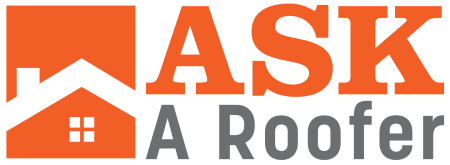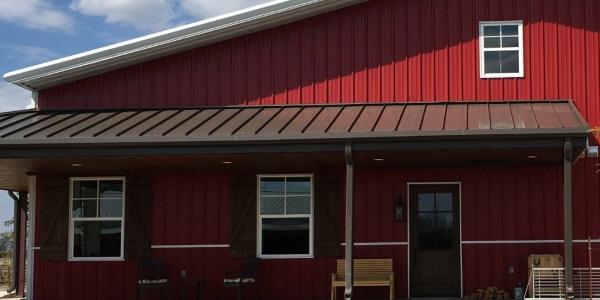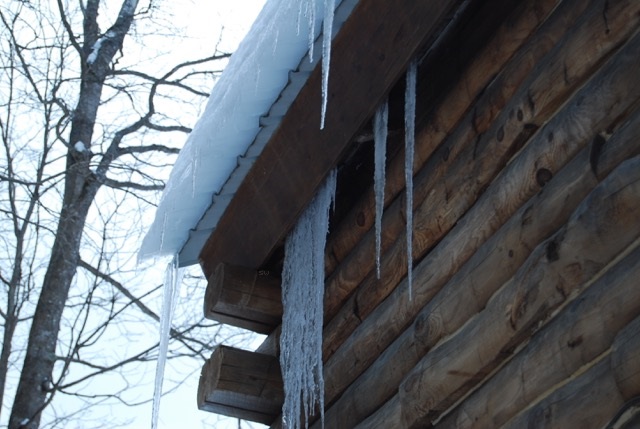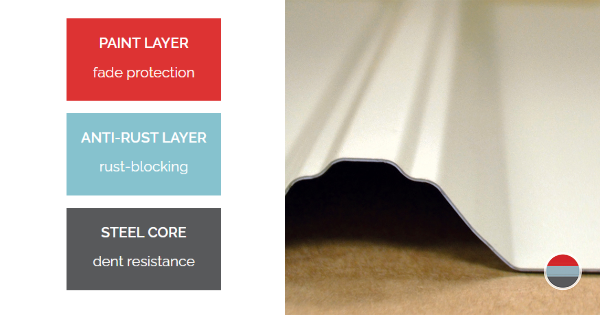How to spot and prevent water damage
October 23, 2025 at 6:00 a.m.By ROOFCORP of America.
The dangers of poor drainage to your commercial roof and how to avoid them.
When a storm ends and the sun is shining, people often think the potential for damage is over. They’re wrong. Water that pools atop your commercial building and isn’t drained properly is not only unsightly — it poses a real threat to your safety, your wallet and the integrity of your property.
That’s why we’re here to help. Here at ROOFCORP of America, we want to make sure you are fully aware of the distressing consequences of trapped water on your roof and provide you with the tools you need to combat this issue before it’s too late.
The hidden damage of stagnant water
Poor drainage isn’t just an eyesore; it’s a gateway to long-term headaches that can harm your budget and compromise the safety of everyone under your roof. When water remains on your roof after a downpour, it gradually seeps into cracks or seams you may not even realize are there. Over time, that moisture can rot decking materials, corrode metal components and create an environment that invites mold growth. By the time you notice stains on interior ceilings or musty odors, it may already be too late to avoid a hefty repair bill.
But it’s not just about leaks. Standing water also increases the overall weight on your roof. Commercial roofs are designed to handle certain loads, yet excess water accumulation pushes those limits. Left unaddressed, the extra stress can weaken structural elements and trigger premature roof failure — an expensive problem that could have been prevented with a well-designed commercial roof drainage system.
Signs you’re facing flat roof drainage problems
If you manage or own a building with a low-slope or flat roof, it’s crucial to spot flat roof drainage problems early. These issues often develop over time, making it easy to overlook the warning signs:
Persistent ponding
A small puddle here or there isn’t unusual after a heavy rain. But if you see water lingering for more than 48 hours, that’s a serious red flag. Consistent ponding suggests that your roof is not draining properly, leaving it vulnerable to leaks, algae growth and structural deterioration.
Discoloration or debris buildup
Does part of your roof have dark streaks or a buildup of leaves, dirt or other debris? These clues point to areas where water stagnates. Debris traps moisture, making the problem worse over time — and further weakening the roof’s membrane.
Sagging or warping
When a flat roof sags in the middle or shows slight warping around edges, it’s often a result of prolonged exposure to standing water. The sheer weight can cause dips that only encourage more water to collect, compounding the problem.
Discoloration or debris buildup
Does part of your roof have dark streaks or a buildup of leaves, dirt or other debris? These clues point to areas where water stagnates. Debris traps moisture, making the problem worse over time—and further weakening the roof’s membrane.
Interior ceiling stains
Water leaks don’t always appear directly below the ponding area; they can travel along support beams and show up in unexpected places. If you notice telltale stains, discoloration or peeling paint on your building’s ceiling or walls, consider an inspection to see if poor drainage is to blame.
Catching these signs early can mean the difference between a quick fix — like clearing a clogged drain — and a massive overhaul involving structural repairs. Addressing commercial roof drainage issues before they spiral helps you sidestep costly emergencies and maintain a safer environment for everyone in your facility.
The true dangers of commercial roof water damage
Let’s dig deeper into what happens when water remains trapped on your rooftop. Commercial roof water damage can manifest in ways you might not immediately see, affecting not only your roof membrane but also your building’s framework:
- Accelerated membrane degradation: Excessive moisture breaks down adhesives, flashing and membranes faster than normal.
- Insulation compromise: Water-logged insulation can lose its R-value (which measures resistance to heat flow), causing utility bills to skyrocket.
- Mold and mildew: Poorly drained roofs create a breeding ground for mold, which can infiltrate your HVAC system and impact indoor air quality.
- Electrical hazards: Water seepage can corrode wires, trip circuits and pose a fire risk if it contacts electrical components in the ceiling.
Even if you don’t see immediate leaks, the constant presence of water can chip away at the integrity of your roof and interior. Ultimately, ignoring commercial roof water damage is a gamble — one that can lead to sudden system failure or unforeseen safety hazards down the road.
The long-term consequences of structural damage and voided warranties
When building owners overlook commercial roof drainage problems, the repercussions can extend well beyond an isolated leak. The structural integrity of the roof deck can be compromised, especially if wood rot or rust sets in. As the material weakens, you may face a partial collapse — or, in a worst-case scenario, a catastrophic failure that puts people and assets at risk.
Another often overlooked consequence is the potential loss of your roof warranty. Many warranties specify that standing water or a lack of adequate drainage voids their coverage. If a manufacturer inspector finds evidence of chronic ponding, they may determine that the roof wasn’t used under normal conditions, thereby nullifying your warranty protection. That’s a financial hit few businesses can afford, especially when they’re counting on that warranty for peace of mind and coverage against premature repairs.
To guard against these risks, keep a close eye on maintenance logs, schedule routine inspections and ensure your drainage system is up to par. Ignoring these steps can make the difference between having a durable, long-lasting roofing system and needing a full replacement years ahead of schedule.
Preventing drainage issues with a proactive approach
So, how can you avoid these hidden pitfalls? Proper roof design and regular upkeep go a long way. If you’re in the market for a new roof, consider partnering with specialists who prioritize commercial roof drainage from the outset. Slopes, scuppers, gutters and drains all need to be precisely sized and positioned to handle heavy rainfall without overwhelming your system.
For existing roofs, a proactive maintenance schedule is your best defense. This includes regular clearing of debris, checking for cracks or clogs and addressing minor issues like loose flashing right away. By staying ahead of problems, you avoid the domino effect where one small drainage hiccup leads to a host of new issues.
Have a question? AskARoofer.
Find your local roofing contractor in the AskARoofer™ Contractor Directory.














Comments
Leave a Reply
Have an account? Login to leave a comment!
Sign In